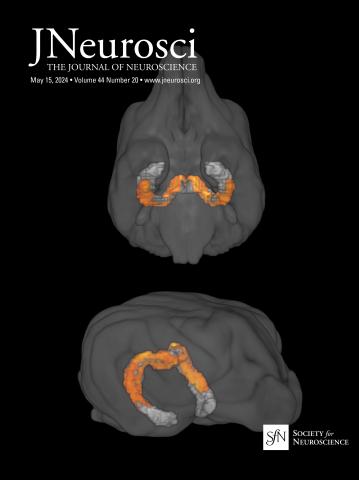Brain-behavior differences in pre-modern and modern lineages of domestic dogs.
IF 4
2区 医学
Q1 NEUROSCIENCES
引用次数: 0
Abstract
Although domestic dogs were the first domesticated species, the nature of dog domestication remains a topic of ongoing debate. In particular, brain and behavior changes associated with different stages of the domestication process have been difficult to disambiguate. Most modern Western breed dogs possess highly derived physical and behavioral traits because of intense artificial selection for appearance and function within the past 200 years. In contrast, pre-modern dogs, including primitive/ancient breeds, village dogs, and New Guinea Singing Dogs, have undergone less intensive artificial selection and retain more ancestral characteristics. Consequently, comparisons between modern and pre-modern dogs can shed light on brain and behavior changes that have occurred recently in the domestication process. Here, we addressed this question using a voxel-based morphometry analysis of structural MRI images from 72 modern breed dogs and 13 pre-modern dogs (32 females). Modern breed dogs show widespread expansions of neocortex and reductions in the amygdala and other subcortical regions. Furthermore, cortical measurements significantly predicted individual variation in trainability, while amygdala measurements significantly predicted fear scores. These results contrast with the longstanding view that domestication consistently involves reduction in brain size and cognitive capacity. Rather, our results suggest that recent artificial selection has targeted higher-order brain regions in modern breed dogs, perhaps to facilitate behavioral flexibility and close interaction and cooperation with humans.Significance Statement This study provides novel insights into the neural changes associated with artificial selection during dog domestication by comparing brain morphology between modern breed dogs and a unique and rare sample of pre-modern dogs, including ancient breeds, village dogs, and New Guinea singing dogs. Our findings demonstrate that modern breed dogs exhibit significant cortical expansion linked to trainability and pre-modern dogs show amygdala enlargement associated with heightened fear, suggesting that brain evolution has happened rapidly in a species embedded in the anthropogenic environment.前现代和现代家犬血统的脑行为差异。
虽然家狗是第一个被驯化的物种,但狗的驯化性质仍然是一个持续争论的话题。特别是,与驯化过程的不同阶段相关的大脑和行为变化很难消除歧义。大多数现代西方品种的狗具有高度衍生的身体和行为特征,因为在过去的200年里,对外观和功能进行了激烈的人工选择。相比之下,前现代犬,包括原始/古代品种,乡村犬和新几内亚歌唱犬,经历了较少的人工选择,保留了更多的祖先特征。因此,现代和前现代狗之间的比较可以揭示最近在驯化过程中发生的大脑和行为变化。在这里,我们使用基于体素的形态学分析来解决这个问题,分析了72只现代犬和13只前现代犬(32只雌性)的MRI结构图像。现代品种的狗表现出新皮层的广泛扩张和杏仁核和其他皮层下区域的减少。此外,皮质测量显著预测可训练性的个体差异,而杏仁核测量显著预测恐惧得分。这些结果与长期以来的观点形成对比,即驯化始终涉及大脑大小和认知能力的减少。相反,我们的研究结果表明,最近的人工选择瞄准了现代品种狗的高阶大脑区域,可能是为了促进行为灵活性和与人类的密切互动与合作。本研究通过比较现代犬种和一种罕见的前现代犬种(包括古代犬种、乡村犬和新几内亚歌唱犬)的大脑形态,为狗驯化过程中与人工选择相关的神经变化提供了新的见解。我们的研究结果表明,现代品种的狗表现出与可训练性相关的显著皮质扩张,而前现代品种的狗表现出与高度恐惧相关的杏仁核扩大,这表明在人类环境中嵌入的物种中,大脑进化发生得很快。
本文章由计算机程序翻译,如有差异,请以英文原文为准。
求助全文
约1分钟内获得全文
求助全文
来源期刊

Journal of Neuroscience
医学-神经科学
CiteScore
9.30
自引率
3.80%
发文量
1164
审稿时长
12 months
期刊介绍:
JNeurosci (ISSN 0270-6474) is an official journal of the Society for Neuroscience. It is published weekly by the Society, fifty weeks a year, one volume a year. JNeurosci publishes papers on a broad range of topics of general interest to those working on the nervous system. Authors now have an Open Choice option for their published articles
 求助内容:
求助内容: 应助结果提醒方式:
应助结果提醒方式:


